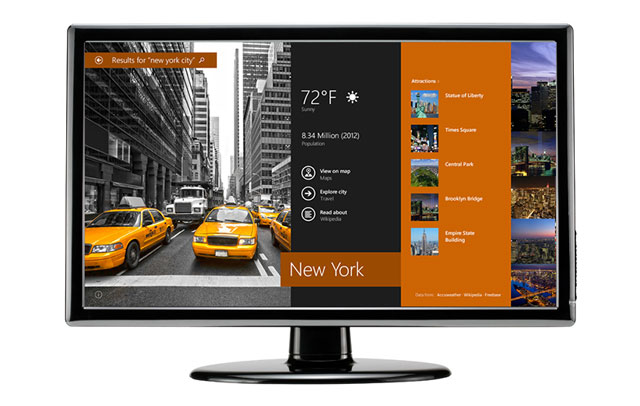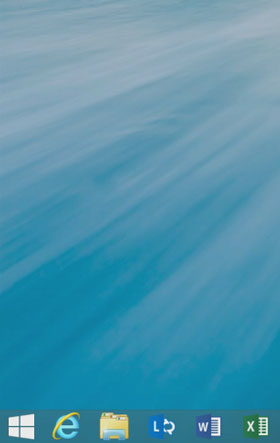
The latest version of Microsoft’s flagship operating system is almost here. Windows 8.1 is a free update to Windows 8 that brings back the familiar Start button, which was dropped controversially with version 8. More importantly, the upgrade promises a slicker and more integrated user interface that fixes some of the kinks in the software.
The update will be available for download at 1pm on Thursday, 17 October in South Africa (7am in New York) and will be free to all current Windows 8 and Windows RT users.
Though Microsoft capitulated to consumer cries for the Start button’s return, clicking it in 8.1 won’t bring up the traditional list of shortcuts, applications and folders of days gone by but rather the modern, tile-based Start screen introduced with Windows 8. Also, there’s no way of removing the new Start button for those who prefer using the Windows key on their keyboards or the Charms bar on the right-hand side of the screen.
Microsoft is billing 8.1 as an “update” rather than a major upgrade with most of the changes coming in response to user feedback and many merely cosmetic.
— Firstly, the distinction between upgrade versions and full licences has been done away with, making it easier to do a clean installation of the operating system regardless of which version of Windows users are running.
— Search has been bolstered and the software searches the PC, apps and the Internet simultaneously.
— Users can now set same wallpaper for both the Start screen and desktop views, giving a far more consistent feeling experience when switching between the two.
— They can also change the size of apps’ tiles on the Start screen. For apps like Weather, this means the ability to see two days’ worth of forecasts just by looking at the tile.
— There’s also the option to arrange apps by “most used”, “date installed” or category along the ability to prevent newly installed apps from automatically being added as a tile to the Start screen.
— Microsoft has also added new functionality to the feature that allows a user to snap two windows together. Depending on the size of their screen, the user can now snap additional windows and can alter what percentage of the screen each occupies.
— Xbox Music is getting an overhaul, too, but the service is yet to be launched in South Africa, despite assurances a year ago that it would be available before the end of 2012.
— Microsoft has also added a new app called “Reading List” to Windows 8.1 that allows users to add content from Web pages for later consumption using the Share charm.
— And the Windows Store now includes a new recommendation feature that suggests apps based on what people use and displays recommendations on every download page. Apps also update automatically in the background.

Dimitri Tserpes, chief technology officer at technology distributor and PC assembler Mustek, says that apart from the return of the Start button — which will please those who long for familiarity and those who felt disorientated by Windows 8 — the only other big cosmetic change is the ability to boot the desktop rather than the Start screen.
Tserpes says Microsoft has worked hard to resolve what he calls Windows 8’s “personality disorder”, which resulted in some computer settings having to be changed through the tile-based Start screen interface and other settings through the traditional Control Panel. “A lot of work has been put into cleaning that up.”
Windows 8 users should be prompted automatically to update to the new software following Thursday’s commercial launch. However, Tserpes says a bigger issue for device manufacturers and resellers is getting Windows users to upgrade from the older Windows 7.
There is a real performance improvement to be had by moving to Windows 8 or 8.1 — “your battery lasts longer, your machine boots faster and it runs apps better” — and that the difference between 8 and 8.1 is “marginal” in comparison, he says.
The hype surround 8.1 has been limited. “The last time there was real hype around a Microsoft release was for Windows 95.”
Aside from die-hard Microsoft fans, interest is lacking, particularly when compared to the level of anticipation that precedes Apple software updates, such as the recent iOS7 for iPhone and iPad.
Many users, Tserpes believes, simply won’t notice the Windows 8.1 update at all.
Microsoft South Africa was unable to confirm standalone pricing for Windows 8.1 on Monday. The local subsidiary is expected to reveal rand pricing at a launch event in Johannesburg on Thursday.
US recommended prices are US$120 for Windows 8.1 and $200 for Windows 8.1 Pro, so expect prices to be in the region of R1 200 and R2 000 respectively. — (c) 2013 NewsCentral Media




